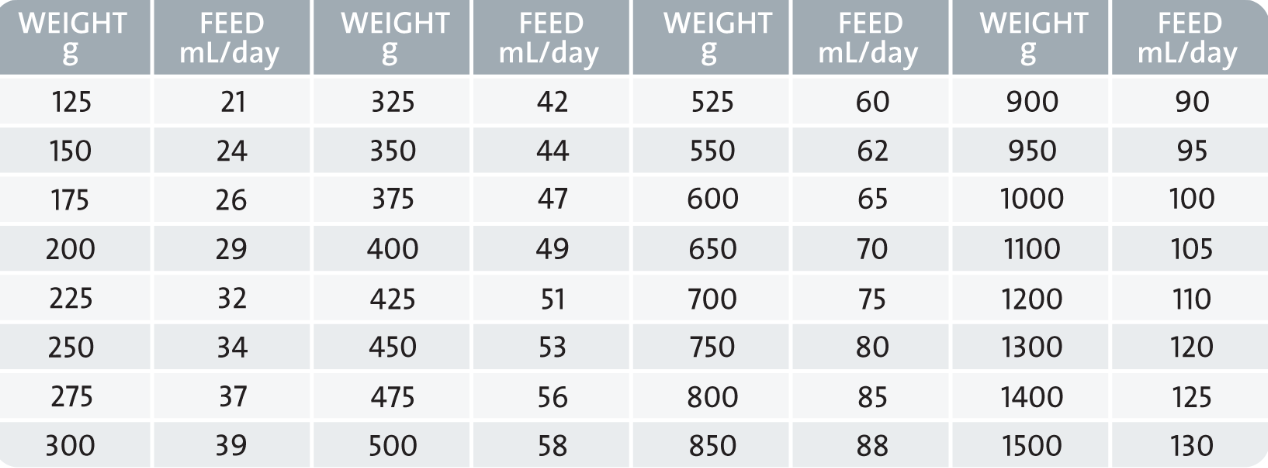- Home
- All Products - Vet Recommended Pet Supplies
- Wombaroo Wombat Milk Replacer 0.4
Wombaroo Wombat Milk Replacer 0.4
$16.93
Product Information
Milk substitute for wombat joeys with between 40% – 60% of their pouch life completed.
Joeys at this stage have darkening skin to fine fur, eyes nearly opened to just opened, ears erect. Completely confined to the pouch, but may poke head out occasionally. Faeces toothpaste consistency.
- Formulated to match the composition of mid-lactation wombat milk.
- Moderate energy milk, with a balance of carbohydrate & fat content.
- Protein high in sulphur-containing amino acids (cysteine & methionine) for the onset of hair growth.
Typical Analysis
Protein
34%
Fat
22%
Ash
4%
Moisture
3%
Energy (ME)
20 MJ/kg
Ingredients
Whole milk solids (low lactose), whey protein, casein, glucose, vegetable oils, omega-3 & 6 fatty acids, vitamins A, B1, B2, B3, B5, B6, B9, B12, C, D3, E, K, biotin, choline, calcium, phosphorus, potassium, sodium, magnesium, zinc, iron, manganese, copper, iodine, selenium.
Feeding Guidelines
Use Wombat Milk Replacer 0.4 for mid lactation joeys, just before the onset of rapid hair growth. Joeys at this age are prone to disease and mortality and should only be attempted by experienced carers.
Impact Colostrum Supplement may be fed to enhance the immune system
Making up Milk
To make 100mL of milk: Mix 19g of powder (2½ scoops) with 90ml of warm water.
To make 1 litre of milk: Mix 190g of powder with 900ml of warm water.
Add about half of the water to the powder first and mix to a paste. Then make up with remaining water and mix thoroughly. Water is preboiled to ensure that it is sterilised. If the water is too hot it can cause the milk to curdle. If it is too cold then it will be difficult to disperse the powder. An electric whisk can be used for mixing larger quantities. Milk can be stored in the fridge for a day or can be frozen for up to 2 weeks. It may be useful to store frozen milk in small portions (e.g. ice cube trays), so that the required daily feed volumes can be easily thawed out. Once thawed out, discard any unused milk, and wash feeding utensils thoroughly.
Feeding Guide

Warm milk to about 30°C and feed using a bottle and teat. An LD Teat is recommended for in-pouch wombats. Feed around 6-8 times per day for joeys with an Age Factor 0.4, gradually reducing this to about 4 times per day once fully-furred. If the joey is showing signs of dehydration (e.g. during hot weather), give extra drinks of water between feeds. Young joeys dehydrate rapidly if not maintained under optimum husbandry conditions. In particular, carers often keep wombats at too high a temperature, which can cause dehydration. Consult your veterinarian or experienced carer for further information about husbandry and feeding of joeys.
Growth
Refer to the Common (Bare-nosed) and Southern Hairy-nosed Wombat growth charts. Even within species there may be significant variation in growth rate depending on sex, regional variation and health status. Weigh joeys regularly to verify weight gains and determine the volume of milk to feed. Overfeeding milk can cause diarrhoea so feed the suggested volumes in our tables.
Transition from Wombat 0.4 to Wombat >0.6 formula
Milk transition refers to when a joey is changed from one Wombaroo milk stage to the next. It is important to transition joeys at the correct age to ensure they are getting the proper nutrition for their stage of development. Note that transition is dependent on joey age and not weight, as underweight joeys still need to be transitioned at the correct time. When young wombats start to produce fine fur they are ready to transition onto Wombat Milk Replacer >0.6 formula. Joeys are gradually transitioned over 15 days by mixing decreasing amounts of the 0.4 formula with increasing amounts of the >0.6 formula. This is outlined in the species growth charts.
Shipping
Enjoy free shipping Australia-wide on orders over $49! For orders under $49, shipping fees are calculated at checkout. We have warehouses in every state, so orders usually arrives within 2-8 business days, depending on where you are.
Returns
We offer a hassle-free return policy within 30 days for unopened items in original condition for exchange or store credit. Refunds are available if the product is faulty or not as described; however, food or treats cannot be returned once opened.
Palatability Guarantee
Our Palatability Guarantee applies to selected brands, including Advance, Royal Canin, Purina, Hill's and 4CYTE, allowing you to return any unused portion of dry/wet food for an exchange or full refund.








